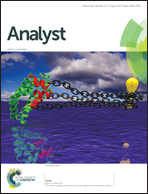The innate capacity of proteins to protect against reactive radical species†
Abstract
Maintaining redox homeostasis, or the balance of oxidant and antioxidant forces, is essential for proper cellular functioning in biology. Although the antioxidant nature of many small molecules such as vitamin c and glutathione have been thoroughly investigated, contributions to redox homeostasis from larger biomolecules have received less attention. Evidence has shown that some proteins are antioxidant (in a non-catalytic sense), but large scale examination of this property for a diverse set of proteins has proven difficult. Herein, radical-directed dissociation mass spectrometry (RDD-MS) is used to examine the antioxidant capacity of a series of proteins with diverse biological roles, persistence intervals, and localizations. Digestion of these proteins reveals that all contain antioxidant peptide regions. Examination of the amino acid content of the antioxidant peptides does not reveal significant differences relative to normal peptides, suggesting that sequence may be more important than residue content. Sequence homology analysis across organisms reveals that antioxidant regions are frequently conserved, although many of these regions are also known to have other functions which may have influenced evolutionary pressure. Regardless of the origin, it is clear that many proteins may play secondary roles as sacrificial antioxidants within the cellular milieu.


 Please wait while we load your content...
Please wait while we load your content...